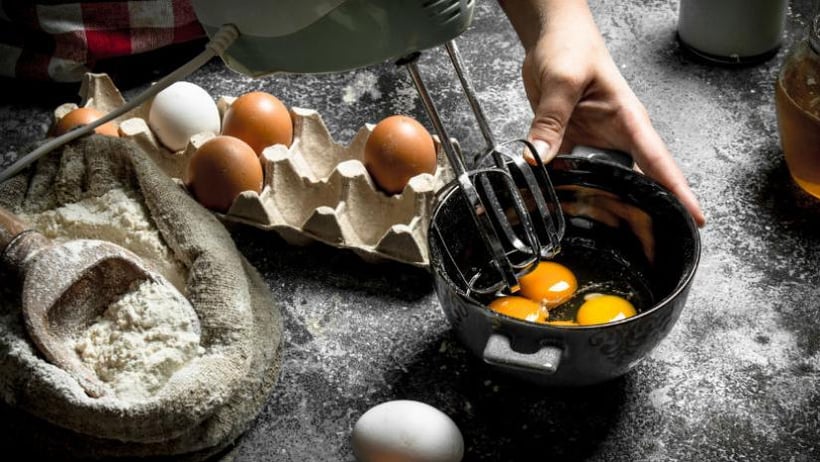
The Easter holidays provide us with a good opportunity to recap how to work with eggs safely.
Eggs are a great food in terms of nutrition and are often used in many dishes in a commercial kitchen, but they can contain high levels of bacteria, especially Salmonella. Foods that contain raw eggs have been identified as particularly dangerous – for example, mayonnaise, raw egg dressings, raw egg desserts (e.g. mousse, custards) and raw egg sauces (e.g. hollandaise).
In this blog post, we’ll explore how you can work with eggs safely.
When buying or receiving eggs
When you buy or receive eggs, there are a few things you need to look for so that you can minimise the food safety risk. Here are some tips when buying the product:
- Only ever buy eggs from a reputable supplier approved by the local authorities.
- Open the carton and look at the eggs. They should not be cracked, stained, or dirty.
- Buy eggs in a carton, not from a bulk “self-serve” stand.
- Choose smaller eggs. The larger the egg, the thinner the shell and the more prone it is to crack.
Where possible, consider if you need to use raw eggs at all. Try to use commercially produced dressings, sauces and spreads instead of making raw egg products. And use pasteurised egg products instead of raw eggs in ready-to-eat products such as desserts and drinks.
When storing and handling eggs
Follow the instructions below to ensure that you’re storing and handling eggs safely:
- Keep eggs in the refrigerator at a temperature of 4°C / 40℉ or less.
- Keep eggs in the carton so that you will not miss the best before date.
- If required, eggs can be broken out of their shells and frozen. Whole eggs and egg whites freeze easily. Yolks can become gelatinous if frozen alone – to prevent this, add salt or sugar.
- Always follow FIFO (First In, First Out) principles for storing eggs. In other words, use the eggs that you received the earliest first, and then use eggs that you received later.
When preparing and cooking eggs
- When you break open the eggs, check that the egg whites cling to the yolk, and also check that the yolk doesn’t break up easily.
- Be careful not to let the egg whites or yolks touch the exterior of the shell. If this happens, discard the food you’re preparing and make a new batch.
- If you are pooling eggs (in other words, mixing two or more eggs together), use the mixture immediately.
- Be sure you cook foods containing eggs to at least 74°C / 165°F – yolks should be hard for the food to be considered safe.
- Finally, always clean and sanitize surfaces, equipment and utensils before, after and in between preparing batches of eggs.
A word of caution
Eggs are considered a 'potentially hazardous food', which means they are an ideal host for bacteria and other microorganisms, including dangerous pathogens like Salmonella.
The elderly, children, pregnant women and other high-risk groups should never eat raw eggs, because they are more likely to contract a food-borne illness, as well as more likely to experience severe symptoms if they do.
Find out more about potentially hazardous foods — including specific rules for purchasing, storing, thawing, preparing, cooking and serving — in the CIFS Guide to Potentially Hazardous Foods.




